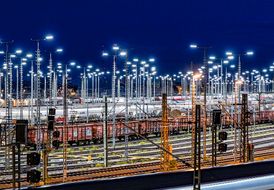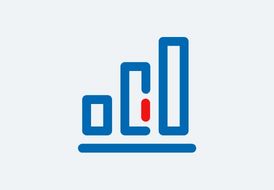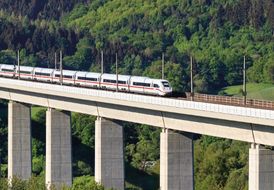Development in the relevant markets
In Germany, we assume dual responsibility for rail transport as a result of our integrated Group structure. We are both the operator and primary user of the track infrastructure. The resulting greater focus on customers and efficiency in our infrastructure benefits all train operating companies without discrimination. In addition to the Group’s internal code of conduct, competitive neutrality of our track infrastructure is ensured by means of regulation that is considered strict by international standards.
| DB TRACK INFRASTRUCTURE IN GERMANY / selected key figures | 2021 | 2020 | Change | |
absolute | % | |||
Infrastructure customers | 453 | 456 | –3 | –0.7 |
Intra-Group railways | 18 | 18 | – | – |
Non-Group railways | 435 | 438 | –3 | –0.7 |
Train-path demand (million train-path km) | 1,109 | 1,066 | +43 | +4.0 |
Intra-Group railways | 694.4 | 680.2 | +14.2 | +2.1 |
Non-Group railways | 414.3 | 385.4 | +28.9 | +7.5 |
Share of non-Group railways (%) | 37.4 | 36.2 | +1.2 | – |
Station stops (million) | 158.8 | 155.4 | +3.4 | +2.2 |
Intra-Group railways | 112.7 | 111.2 | +1.5 | +1.3 |
Non-Group railways | 46.1 | 44.2 | +1.9 | +4.3 |
Individual figures are rounded and therefore may not add up.
The train-path demand and the number of station stops increased significantly again in 2021. This was mainly the result of the catch-up effects following the Covid-19 pandemic. In addition, there was general market growth in all types of transport, though this was partly counteracted by special events (harsh winter, floods and strikes). In line with the long-standing trend, the non-Group railways continued to gain market share, while demand from intra-Group railways declined.



